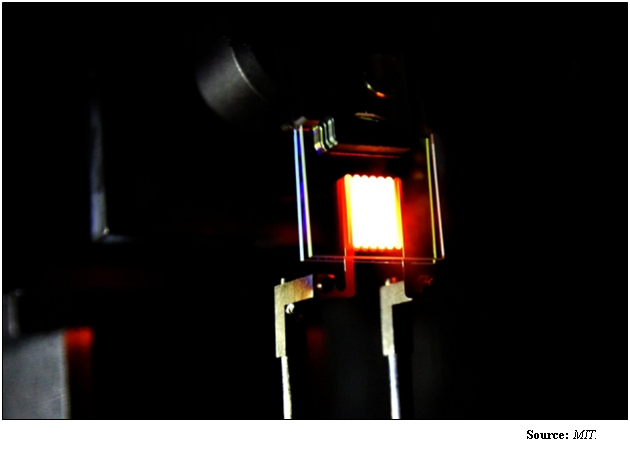By Dustin Howard
Hand in hand with then-House Speaker Nancy Pelosi, a number of Republicans in the House, as well as the Senate, supported the Energy Independence and Security Act of 2007, signed into law by then-President George W. Bush.
One of the more infamous provisions of the law phased out Edison’s incandescent light bulb in the name of efficiency. This was an unpopular action that was reviled for years, as American production of bulbs ceased and expensive, toxic compact fluorescent bulbs were imported in their stead.
The irony? The technology to improve the efficiency of the bulb now exists that match the power usage of the CFL or LED according to the Massachusetts Institute of Technology (MIT).
These nanophotonic bulbs are “[a] proof-of-concept device built by MIT researchers demonstrates the principle of a two-stage process to make incandescent bulbs more efficient. This device already achieves efficiency comparable to some compact fluorescent and LED bulbs,” according the MIT news release.
If you think that’s ironic, how about the fact that the research project that produced this result was itself funded by none other than the Army Research Office through the MIT Institute for Soldier Nanotechnologies, and the S3TEC Energy Frontier Research Center funded by the U.S. Department of Energy?
This was not lost on Americans for Limited Government Foundation President Nathan Mehrens, who has grappled with the original light bulb ban regulation for years now. “It is ironic that Congress would move to outlaw something and fail to defund the research,” Mehrens said.
Congress currently defunds the regulation on an annual basis, opposed by environmentalists as a wasteful product. Now, it is time for Republicans in Congress to dispense with the regulation once and for all. While they are atoning, they should realize that this regulation cost hundreds of American jobs in places like the General Electric factory in Winchester, Virginia.
But before you shed a tear for G.E. or any of the other manufacturers, you should know that they wholeheartedly supported the rule. The Washington Examiner reported in 2013 that Sylvania, Phillips and G.E. were themselves done with the Edison’s 25 cent bulb, and wanted to sell something more profitable; the 2007 law was a convenient way to break consumer habits that preferred the cheaper, less efficient bulbs. Because it enjoyed industry support, this softened GOP opposition to the rule.
So to review: Congress both supported banning a product enjoyed by their constituents because of an intense lobbying effort to displace an unprofitable product to create a market for fluorescent and LED bulbs. In turn Congress funded research to displace those products, ironically supporting a technological innovation that negated the very rationale for opposing them in the first place.
The moral of the story is that Congress does some things very well, but shouldn’t be in the light bulb business. This serves as a case study in why politicians shouldn’t be allowed to meddle in the economy, lest they ban something else that is too efficient for everyday use. Eventually, innovation was going to win out anyway.
Thus, Congress should withdraw altogether from this effort by ending this rule and others that enable regulatory capture, and let the light bulb manufacturers fight their own battles, who should fund their own research and development instead of lobbying campaigns to rig markets.
Congress should do what it was actually designed to do: maintain its Article I responsibilities and keep watch against abuses by the other branches of government. Instead of limiting the consumer’s choices, Congress should stick to its job, and limit government.
Dustin Howard is a contributing editor at Americans for Limited Government.







